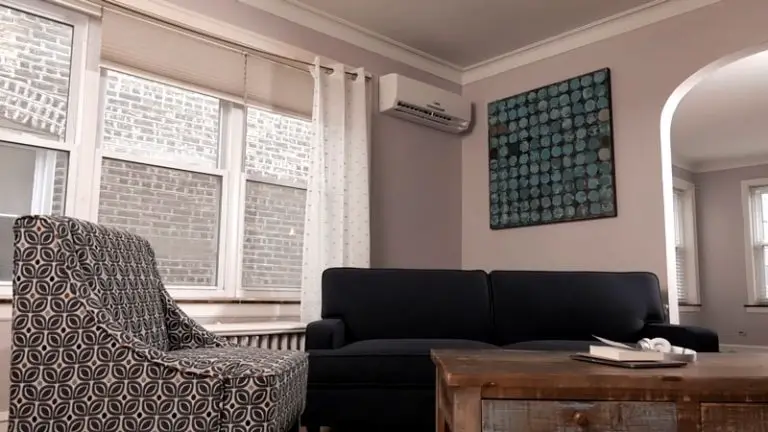GE Profile Refrigerator Problems With Ice Maker and Solutions
Ice makers are a crucial aspect of modern refrigerators. They provide a steady supply of ice for our daily needs, whether it’s for a refreshing drink, for cooking or for special occasions. GE Profile refrigerators are known for their advanced features and quality, including their ice makers.
However, just like any other appliance, ice makers in GE Profile refrigerators can develop problems that need to be addressed. The purpose of this blog is to outline the 8 most common problems with GE Profile refrigerator ice makers and provide solutions for fixing them.
This guide is meant to help homeowners troubleshoot and resolve common issues, but it is always recommended to seek professional help when needed.
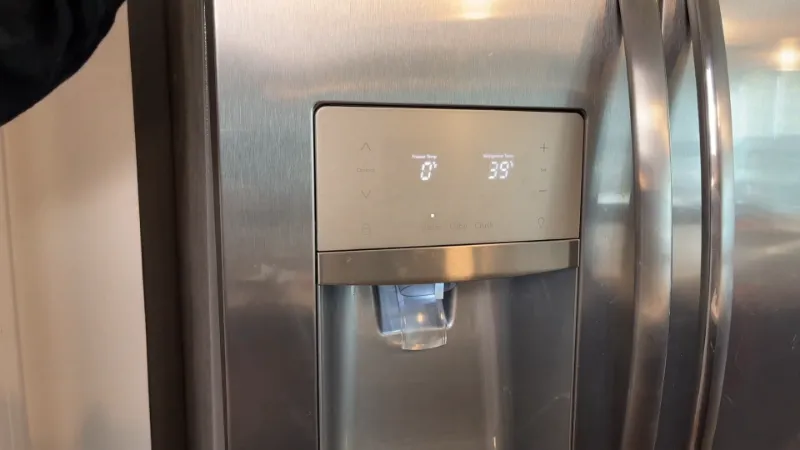
You'll Learn About
Ge Profile Refrigerator Problems
A GE Profile refrigerator’s ice maker can experience several problems that may prevent it from functioning properly. Some of the common problems include:
- The ice maker might be turned off.
- The water supply could be off or have insufficient water pressure.
- The mechanical arm (ejector’s arm) could be faulty.
- The freezer could be too warm.
- The water filter could be bad.
- The ice tray temperature sensor/thermostat could be faulty.
- The fridge door switch could be faulty.
- A possible frozen water or ice chunk in the ice maker.
To reset a GE Profile refrigerator’s ice maker, it can be unplugged from the electrical outlet for 60 seconds and then plugged back in. Alternatively, you can switch the on/off switch and try freeing the paddle/shut-off arm. To optimize ice production, the freezer temperature should be kept below 10°F, preferably around 0-5°F.
Other common problems with GE Café refrigerators include issues with cooling, water dispensers, control panels, and compressors. However, these problems are fixable and can be solved by troubleshooting.
Problem 1: Ice Maker is Off
The first and most obvious issue that can arise with the ice maker in a GE Profile refrigerator is that it might simply be turned off. In this scenario, the refrigerator will not produce any ice.
If the ice maker is off, you won’t see any lights or indicators, and there won’t be any sound coming from the ice maker.
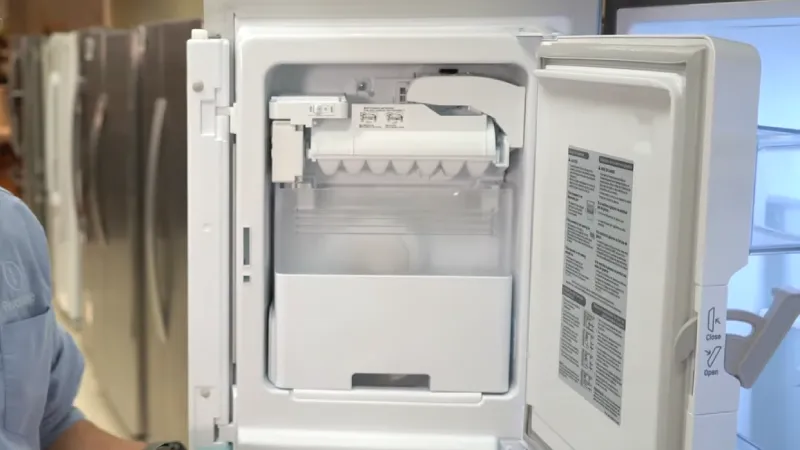
Causes of the Problem
There are several reasons why the ice maker in a GE Profile refrigerator might be turned off. The most common causes include:
Trane Xv90 Heat Exchanger – Problems, Troubleshooting, Solutions
Accidental Shutoff
The ice maker might have been accidentally turned off by pressing the power button or by moving the arm.
Power Outage
If there is a power outage, the ice maker will automatically turn off. When power is restored, the ice maker won’t start automatically, and you’ll have to turn it back on.
Moving the Refrigerator
If you have recently moved your GE Profile refrigerator, the ice maker might have been turned off during the move.
How to Turn on the Ice Maker
Turning on the ice maker in a GE Profile refrigerator is a simple process. Follow these steps to turn on your ice maker:
- Locate the On/Off Switch: Most GE Profile refrigerators have an on/off switch located inside the freezer.
- Turn the Switch to On: Once you have located the on/off switch, simply turn it to the “On” position.
- Wait for Ice Production: It can take up to 24 hours for the ice maker to start producing ice.
Note: If the ice maker still doesn’t turn on, you may need to unplug the refrigerator and wait for a few minutes before plugging it back in to reset the ice maker. If the problem persists, it’s best to call a professional for further troubleshooting.
Problem 2: Water Supply is Off or Insufficient Water Pressure
The GE Profile refrigerator ice maker relies on a steady supply of water to function properly. If the water supply is turned off or there is insufficient water pressure, the ice maker will not be able to produce ice. This can be a frustrating issue, especially if you’re in need of ice for a party or special occasion.
French Door Refrigerator Problems and Solutions
Causes of the Problem
There are several causes of insufficient water pressure in a GE Profile refrigerator’s ice maker. Some of the most common causes include a clogged water filter, a malfunctioning water inlet valve, or low water pressure from the home’s main water supply. It’s important to identify and correct the cause of the problem before attempting to fix the ice maker.
How to Fix the Problem
To fix the problem with the GE Profile refrigerator’s water supply, you need to determine the cause of the issue. If the water filter is clogged, replace it with a new one. If the water inlet valve is faulty, replace it or have a professional repair it.
If the low water pressure is caused by the main water supply, contact a plumber to fix the problem. Once you have corrected the cause of the problem, turn the water supply back on and check the ice maker to see if it is producing ice properly.
If the ice maker is still not working, you may need to reset it by unplugging the refrigerator and plugging it back in after 60 seconds.
if the GE Profile refrigerator ice maker is not producing ice, it could be due to a water supply issue. Checking the water filter, water inlet valve, and main water supply pressure can help determine the cause of the problem and get the ice maker back to producing ice.
Problem 3: Mechanical Arm (Ejector Arm) is Faulty
The mechanical arm, also known as the ejector arm, is a crucial component of the GE Profile refrigerator ice maker. It helps in pushing the ice out of the tray and into the dispenser. If the mechanical arm is faulty, it may not function correctly and result in the ice not being dispensed.
Causes of the Problem
There are several reasons why the mechanical arm can become faulty. One of the main causes is if the arm is obstructed, for example, by an ice cube that has become lodged. The arm can also become faulty if it is bent or damaged in any way, which can cause it to not function correctly.
How to Fix the Problem
If the mechanical arm is faulty, the first step is to check if it is obstructed. If so, remove the obstruction and make sure that the arm is not bent or damaged. If the arm is damaged or bent, it may need to be replaced.
Hisense French Door Refrigerator Ice Maker Problems and Solutions
In some cases, the ejector motor may also be faulty. This can result in the mechanical arm not functioning correctly. If this is the case, the motor will need to be replaced.
To avoid future problems with the mechanical arm, it is important to keep the ice maker clean and free from obstructions. Additionally, it is important to periodically check the arm for any signs of damage or wear and to replace it if necessary.
Problem 4: Freezer is Warmer Than Ideal
The temperature of your freezer plays a crucial role in ensuring that your ice maker produces enough ice. If the temperature inside the freezer is warmer than the ideal range, it can negatively impact the ice maker’s ability to produce ice.
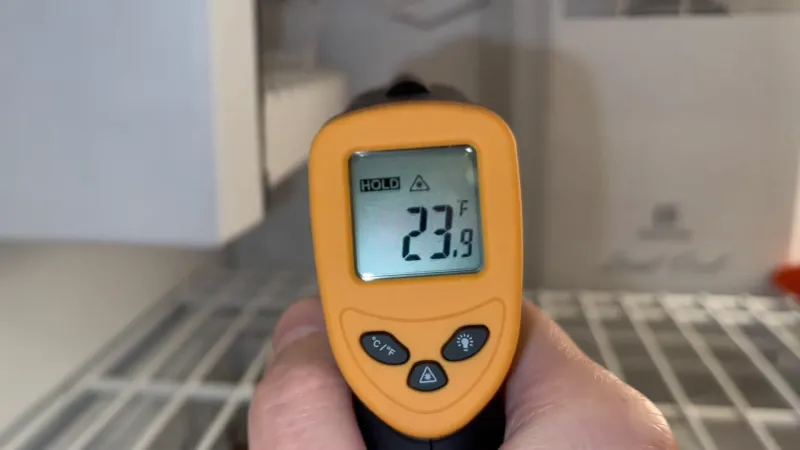
Causes of the Problem
There could be several reasons why the freezer temperature is too warm. Some of the common causes include:
- Faulty thermostat: If the thermostat that regulates the freezer temperature is faulty, it can cause the temperature to become warmer than ideal.
- Poor insulation: If the insulation around the freezer door is damaged or worn out, it can lead to a warmer temperature inside the freezer.
- Clogged air vents: Clogged air vents can impede the flow of cold air inside the freezer, leading to a warmer temperature.
How to Fix the Problem
Here are a few steps you can take to resolve the issue:
- Check the thermostat: If you suspect that the thermostat is faulty, you can try calibrating it or replacing it if needed.
- Inspect the insulation: If you find that the insulation around the freezer door is damaged, you can replace it to improve the temperature regulation.
- Clean the air vents: Cleaning the air vents can ensure that cold air can circulate inside the freezer and keep the temperature regulated.
it’s important to keep the freezer temperature within the ideal range for optimal ice production by your GE Profile refrigerator’s ice maker. If the freezer is warmer than ideal, you can take these steps to fix the problem.
Problem 5: Bad Water Filter
The GE Profile refrigerator has an inbuilt water filter that helps in removing impurities from the water before it is used to make ice. When this water filter becomes clogged or is not working correctly, it may lead to a reduction in the water pressure which, in turn, affects the ice maker’s performance.
A bad water filter can cause ice cubes to become smaller in size or reduce the amount of ice that is produced.
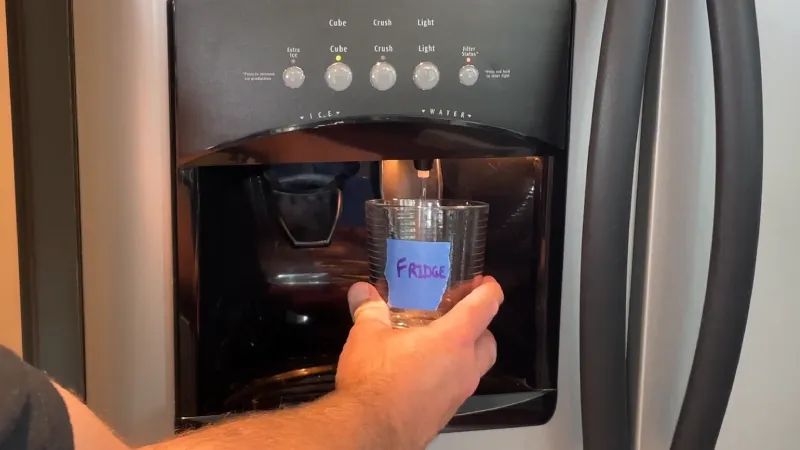
Causes of the Problem
The water filter in a GE Profile refrigerator can become clogged due to the buildup of impurities and minerals over time. This can reduce the water pressure and affect the performance of the ice maker. Other causes of a bad water filter include incorrect installation or a filter that is past its recommended replacement date.
How to Fix the Problem
To resolve the issue of a bad water filter, you should replace the filter with a new one. The process of replacing the water filter is usually simple and can be done by following the instructions in the owner’s manual.
If you are unsure of how to replace the water filter, you can contact a professional technician for assistance. Additionally, it is recommended that you replace the water filter every six months to ensure that your GE Profile refrigerator continues to perform at its best.
A bad water filter can cause your GE Profile refrigerator’s ice maker to produce less ice or produce ice of a smaller size. To resolve this issue, you should replace the water filter and keep the refrigerator’s water supply working correctly.
Amana Refrigerator Ice Maker Problems and Solutions
Problem 6: Ice Tray Temperature Sensor/thermostat is Faulty
The ice tray temperature sensor or thermostat plays an important role in controlling the temperature of the ice maker. If this component is faulty, it can cause the ice maker to stop working properly. The sensor or thermostat is responsible for regulating the temperature of the ice maker and ensuring that the ice cubes freeze at the correct temperature.
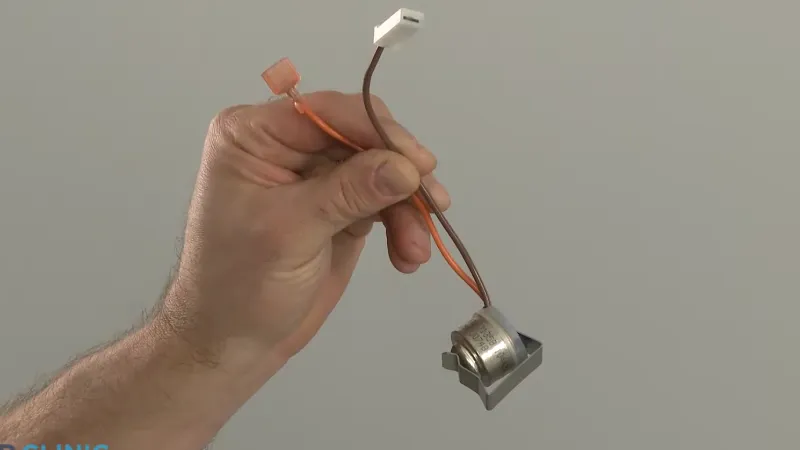
Causes of the Problem
The ice tray temperature sensor/thermostat can become faulty due to a variety of reasons such as age, wear and tear, or a manufacturing defect. Over time, the sensor can become worn and less accurate, which can result in incorrect readings and incorrect ice-making temperatures. In some cases, a manufacturing defect can also cause the sensor to become faulty.
How to Fix the Problem
To fix a faulty ice tray temperature sensor/thermostat, the component needs to be replaced. This is typically a job for a professional technician as it requires access to the inside of the refrigerator and knowledge of electrical components.
A replacement sensor/thermostat can be ordered from the manufacturer or a local appliance store and installed by a qualified technician. Before ordering a replacement, it is recommended to check the manufacturer’s warranty to see if the sensor/thermostat is covered.
a faulty ice tray temperature sensor/thermostat can cause your GE Profile refrigerator’s ice maker to stop working properly. If you suspect that this is the issue, it is important to have it inspected and repaired by a professional technician to ensure that your ice maker is working correctly and producing quality ice cubes.
Problem 7: Fridge Door Switch is Faulty
A fridge door switch is an important component that ensures that the ice maker in a GE Profile refrigerator works efficiently. This switch signals the ice maker to start making ice whenever the fridge door is opened and to stop when it’s closed. When the door switch is faulty, it can cause the ice maker to malfunction, leading to insufficient ice production or no ice production at all.
Cold Air Return Height From Floor
Causes of the Problem
The door switch in a GE Profile refrigerator can become faulty due to various reasons, such as wear and tear over time, accidental damage, or exposure to moisture. If the switch is faulty, it may not send the correct signals to the ice maker, resulting in its malfunction.
How to Fix the Problem
To fix a faulty fridge door switch in a GE Profile refrigerator, follow these steps:
Locate the Door Switch
The door switch in a GE Profile refrigerator is usually located near the bottom of the fridge door or near the dispenser control panel. It is a small switch with two wires attached to it.
Test the Switch
To test the switch, use a multimeter to check if it is sending the correct signals. If the multimeter readings indicate a fault, the switch needs to be replaced.
Replace the Switch
To replace the door switch, first disconnect the power to the fridge by unplugging it from the electric outlet. Then, carefully remove the wires from the faulty switch and attach them to the new switch. Finally, plug the fridge back in and test the ice maker to ensure it’s working correctly.
fixing a faulty door switch in a GE Profile refrigerator can help restore the ice maker’s efficiency and prevent further problems. If you’re unsure about any of these steps, it’s best to consult a professional for assistance.
Problem 8: Possible Frozen Water or Ice Chunks in the Ice Maker
The ice maker in GE Profile refrigerators is designed to automatically create ice cubes and dispense them into the storage bin. However, sometimes the water supply line can freeze, or an ice chunk can form in the ice maker, preventing it from functioning properly. This can result in poor or no ice production and a back-up of water in the ice maker.
Causes of the Problem
There are several factors that can cause water supply lines to freeze or ice chunks to form in the ice maker:
- Low freezer temperature: If the freezer temperature is too low, the water in the ice maker can freeze, leading to a build-up of ice chunks that prevent the ice maker from functioning properly.
- Poor insulation: Poor insulation around the water supply line can cause it to freeze more easily, leading to frozen water or ice chunks in the ice maker.
- Clogged or dirty water filter: A clogged or dirty water filter can reduce water flow to the ice maker, causing the water supply line to freeze or ice chunks to form.
How to Fix the Problem
To fix this problem, try the following steps:
- Check the freezer temperature: Make sure that the freezer temperature is set between 0°F and 5°F, as recommended by GE. If the temperature is too low, adjust it to the recommended setting.
- Check the insulation: If poor insulation is the cause of the problem, add additional insulation around the water supply line to keep it from freezing.
- Replace the water filter: If a clogged or dirty water filter is the cause of the problem, replace it with a new one.
- Clear any ice chunks: If ice chunks have formed in the ice maker, unplug the refrigerator, remove the ice maker and melt any ice chunks using a hair dryer set on low heat. Once the ice chunks have melted, reinstall the ice maker and plug the refrigerator back in.
Blomberg Refrigerator Ice Maker Problems and Solutions
Conclusion
GE Profile refrigerators are a popular choice for many households due to their reliability and quality. However, like any other appliances, they are prone to problems that can affect their ice maker’s performance.
In this blog, we discussed five to ten common issues that GE Profile refrigerator ice makers face, such as the ice maker being off, insufficient water pressure, a faulty mechanical arm, a warmer freezer, and more.
By understanding these problems, homeowners can quickly identify and fix them without having to call a professional. However, it is important to remember that not all problems can be fixed easily, and in such cases, it is recommended to seek professional help.
Overall, keeping an eye out for these common GE Profile refrigerator ice maker problems and taking the necessary steps to fix them can help ensure that your refrigerator continues to perform at its best.



